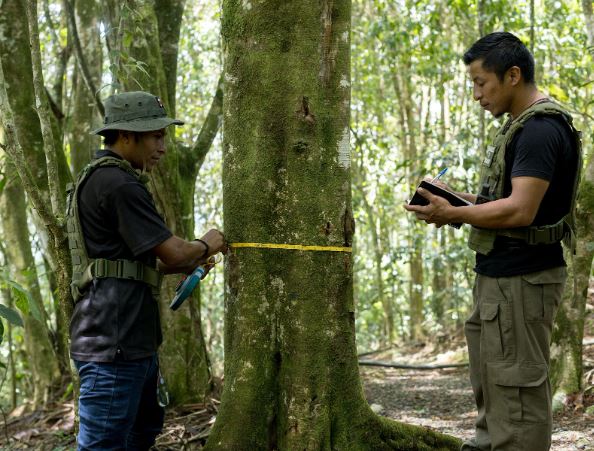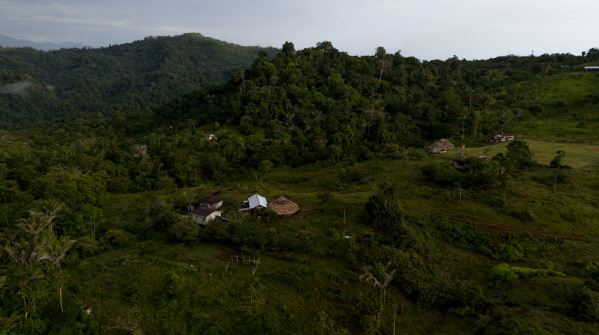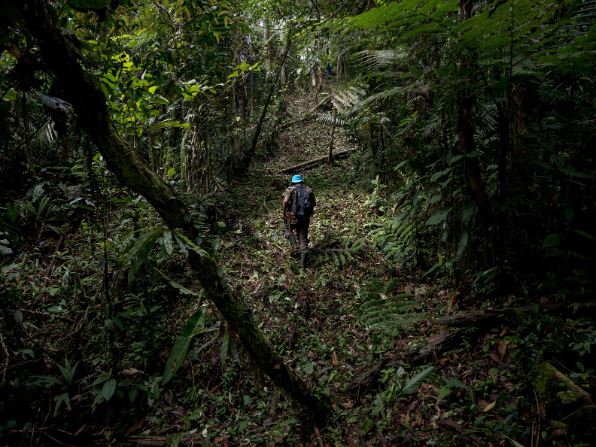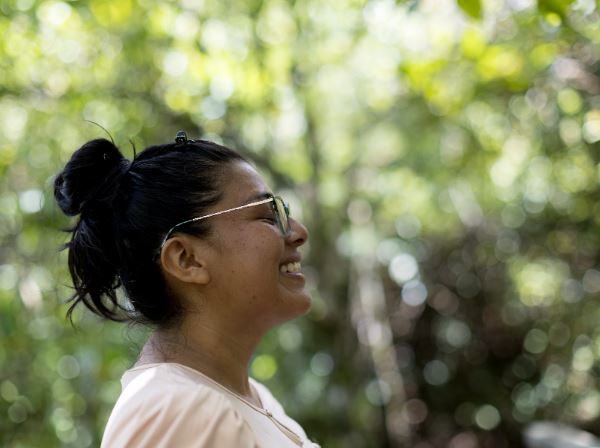Nairi Awari: A territory that recovers and grows

Following a narrow, rocky path that winds deep within the mountains of Limón and Cartago provinces in Costa Rica, you reach the Cabécar Indigenous community of Nairi Awari. This territory, which is not only growing but also recovering from decades of dispossession, is the stage for a constant struggle for the regeneration of its ancestral lands.
Barbilla National Park, a tropical forest spanning 11,994 hectares in Costa Rica’s Caribbean region, is surrounded by the nine communities that make up this indigenous territory. Only three of these communities are traversed by that narrow path; the others can only be reached on foot through the mountain.
In Tsinikicha, one of the villages along the path, today is a busy day. Two groups are preparing to enter the mountains: one with the sole purpose of enjoying a hike under the trees, and the other with the never-ending mission of protecting the territory.
Indigenous-Approved Tourism
Kenneth Pérez waits in front of the school, at the first light, for a pair of Canadian tourists.
He has been a naturalist guide for the territory for six years and is set to lead them on a 15-kilometer hike through the mountains. Their destination is Tsiobata, the village where he lives.
This route is one of the 16 stages of the tourism initiative “El Camino de Costa Rica,” (The Costa Rica Trail) a challenge that spans 260 kilometers on foot from the Caribbean to the Pacific. The segment between Tsinikicha and Tsiobata is the only stage that passes through an indigenous community.
Kenneth is part of a group dedicated to community tourism, led by the Integral Development Association (Spanish acronym: ADI) of Nairi Awari, which is part of the Bribri and Cabécar Indigenous Network (Spanish acronym: RIBCA).
“Our goal is to implement much more tourism, not just for foreigners, but also for nationals to learn about our Cabécar culture and traditions,” he explains.
In Tsiobata, his village, there is a small cultural ranch where visitors are taught about the indigenous worldview, songs, and stories. In contrast, in Tsinikicha, the focus is more on flora and fauna: hiking, rivers, waterfalls, and birdwatching.

Community tourism, in addition to being an economic boost for families, has given those working as guides the opportunity to learn other languages, receive training in tourism, and gain knowledge about biodiversity.
“Most people leave and lose their identity, forgetting their own culture and traditions. For the family it is significant to work for the community. It’s something wonderful, they say,” he explains.
In the distance, the tourists can be seen descending the cobbled path. Kenneth welcomes them, and after a greeting in English, they quicken their pace and disappear into the pastures leading up to the mountains.
The helpers of the Man of the Forest
A few kilometers from where Kenneth and the couple of tourists began their journey, the forest rangers set out on their own mission.
Equipped with GPS, drones, camouflage clothing, and handcuffs, Osvaldo Martínez and the rest of the team from the Bäsublukima Forest Rangers Association (meaning “helpers of the man of the forest” in Cabécar) start their journey. They need to investigate a report of illegal logging and potential encroachment by ranchers—issues they have been battling for decades.
“When a report comes in, we have to go quickly to see it and collect the information with the GPS. That’s the most important part because it tells us where the location is. That way, we can resolve doubts without having to call others to come and investigate,” Osvaldo explains.

The work of the rangers becomes increasingly vital as the indigenous territory expands.
The Nairi Awari community has ensured that this forest, which extends beyond the foothills of Barbilla National Park, not only remains intact but continues to grow.
A territory that grows
Through the Payment for Environmental Services Program (Spanish acronym: PPSA), a financial recognition by the Costa Rican state for those who own forests, the Indigenous Peoples of this small territory, organized within the ADI, have developed a mechanism to reclaim the lands that were taken from their ancestors decades ago.

Since 2004 to our current date, the ADI has invested approximately USD 773,000, obtained through the PPSA mechanism, and has been able to purchase around 1,300 hectares of territory that once belonged to them.
“Between the 1970s and 1980s, when this land was still intact and had not yet become cattle ranches, it belonged to the indigenous grandparents. They used a small trail as a route to reach a town. They had small plots where they planted and cultivated their crops,” Alexander explains.
“We have been in this recovery struggle for 20 years. We do it through peaceful means to avoid conflicts with cattle ranch owners,” Alexander comments.
Until the land is recovered
The funds received from the PPSA are not enough to meet the needs of the organized groups within the territory supported by ADI Nairi Awari: two women’s associations, the tourism association, a youth association, the forest rangers, and the Local Indigenous Education Council (Spanish acronym: CLEI).
“The needs of indigenous territories are very significant, such as land recovery, protection of natural resources, addressing climate change, and rescuing culture. Therefore, international cooperation is vital,” explains Jaime López, the president of ADI.

With the intention of strengthening the organized groups within the territory, the Mesoamerican Territorial Fund (Spanish acronym: FTM) of the Mesoamerican Alliance of Peoples and Forests (Spanish acronym: AMPB) allocated $50,000 to the Bribri-Cabécar Indigenous Network (RIBCA), one of its member organizations.
The network was founded in 2005 and is composed of nine women’s organizations, six youth organizations, five forest ranger organizations, and five development associations (one of which is Nairi Awari).
“One of RIBCA’s roles has been to amplify the voices of these organizations on an international level, to convey the message from here to the donors. It’s important that it’s not only the government’s perspective that is highlighted, but also the voices of the territories, of the indigenous communities from their own homes and worldview,” comments RIBCA President Alondra Cerdas.
In the case of Nairi Awari, the funds received were used for organizational strengthening and equipment purchases. Although they have made significant progress, they still need additional funding to further enhance their projects.
For Sara Madriz, a young member of the community, secretary of the women’s association, and board member of Nairi, supporting indigenous women’s associations like hers is a seed that creates a chain reaction, impacting all other groups within Nairi Awari.

